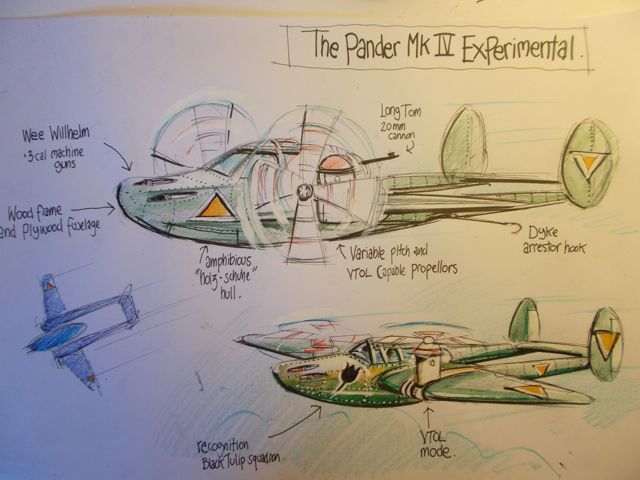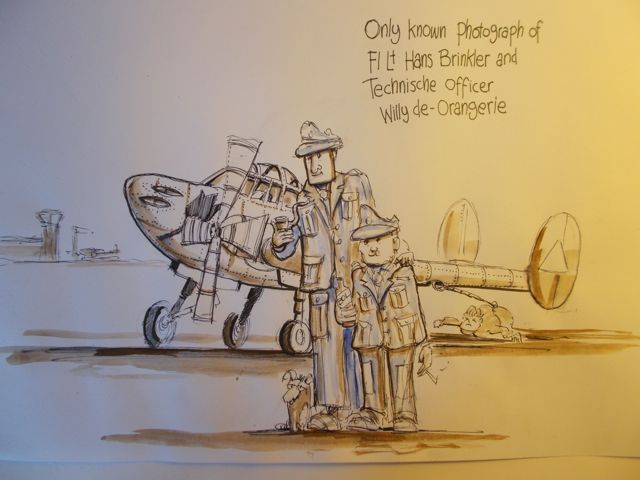The Pander Mark 4 experimental.
After some considerable research we have found these rare photographs, (the only known) images of the Pander Hs 4 experimental, (Holzshuhe). These images (below) were taken at the Luftwaffe proving ground at Rechlin. 
It was here that Oberst Rudi Schtenkentopf put it through rigorous testing before the seconded dutch pilot, (Flt Lt Hans Brinkler) absconded with the prototype at the Amsterdam Shiphol. 
There was a mine sweeping variant, Type Hs Dt, (De Tromp) designed for low estuaries along the Medway, a camouflage variant, the Hs Ds, (de Stijl) and the Hs Ww (Wee Wilhelm) smokescreen version. Others, namely the Hs Vg, (Van Gogh) and the Hs Ve, (Van Eyck) were considered but deferred for the more popular Hs Vd (Van Dyke) a hybrid aircraft possessing both dyke arrestor apparatus and the ‘Alte mann’, (long tom) swivel gun.
This aircraft was revolutionary. An experiment in the use of composite materials. Conceived well before the mosquito, (‘the wooden wonder’), it incorporated wooden, ply and glued fuselage and wing parts. The distinctive ‘windmill’ propellors and the ‘clog’ fuselage established a first for subsequent innovation. It was fast, (upwards of 400 mph at above 20,000 feet), had considerable range, (2000 miles) and was estimated to achieve a swift retreat across Malaya and the Dutch East Indies, (if required) in record time. The prototype possessed amphibious characteristics through such innovation as the Dyke arrestor hook, the “Dykefinger”, (literally ‘finger in the dyke’) fuel feed system, the rancid Tulip oil feed system, and the Mein rad kaputt, (the broken bicycle) auxiliary landing system. Not to be confused with the ‘Fliegender Hollander’ carburetion system as installed at Rechlin.
Of particular interest, though the prototype cost over 500 guilder to manufacture, the export model for overseas customers had a projected cost of over 5000 guilder. Apparently this presented a stumbling block for export contracts as the fine print requested amongst other items an advance payment for air usage, cloud dispersal, and propellor turbulence tax. This in addition to the tyre rent resource surcharge and the hydraulic fluid dispensation tax were considered too onerous for the projected clientele amongst the copra, sugar and tin magnates of Dutch East Indies. Apocryphally one prototype for export was commandeered by the IJN, (Imperial Japanese Navy) for a reconnaissance flight over Darwin and crash landed upon return. This plane, designated Hs St, (Shitsu tonka) is being meticulously repaired and will be soon on display to the public at the newly refurbished Australian War Memorial, (AWM) annexe, which shall be devoted to an analysis of those remaining areas on the globe not yet invaded by Australia as allies to the United States or Great Britain.
Cheers
Quentin Cockburn curator militaria, AWM Canberra.
